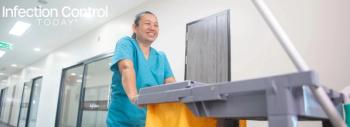
From Pandemic to Endemic: How the Protective Face Mask Market Is Evolving
Once a symbol of crisis, face masks have evolved into everyday essentials—driven not only by pandemic preparedness but by rising air pollution, cultural shifts, and workplace safety regulations. As innovation and demand grow worldwide, the protective face mask market is poised for long-term expansion well beyond COVID-19.
The advent of the pandemic in 2019 has made the usage of masks common. Once seen as a temporary fix during the COVID-19 pandemic, the
In fact, beyond 2032, the global market is projected to have a strong and persistent expansion. With inventions such as tech-driven face masks and ecofriendly designs and fabrics, people are staying prepared in style. For investors and market players, it is the best time to grab a practical and flexible market.
Global Market Prospect: Showing A Promising Prospect
Analysts at
What Factors are Driving the Market’s Development?
Demand for protective face masks has not slowed, and there are good reasons for it.
- Urban Development & Rising Air Pollution
Urban air is becoming increasingly hazardous in places like Delhi, Beijing, Los Angeles, and even Gurgaon, India. In these places, pollution levels are now around 15 times the World Health Organization limits, and local monitors are unable to monitor them accurately. Here is a list of the top 5 polluted countries worldwide in 2025.
The WHO recently warned that more than 99% of the world breathes unsafe air, linking pollution to chronic lung diseases. Moreover, in India, sales of antipollution masks jumped around 30% last year, proof that clean air is now a personal responsibility.
- Rising Occupational Safety Regulations
Factories and construction sites cannot operate without masks anymore. Governments from the US to Europe and Asia tighten safety rules, OSHA mandates respirators in many industries, and workplace safety regs require employer-backed mask programs. After a 2023 chemical plant accident in Germany, strict mask mandates expanded, showing that safety rules keep tightening. Companies are providing smart protective masks incorporating sensors for measuring real time air quality.
- Cultural Normalization in Asia and Beyond
In Japan and Korea, masks are as common as umbrellas, worn for allergies, crowds, or just fashion. Luxury brands, such as Gucci and Off-White, now sell designer masks, turning protection into a statement. Even Western cities are catching on, with over 35% of Americans still keeping masks handy post-COVID-19.
- Seasonal Outbreaks & Viral Preparedness
Influenza seasons hit harder now, and scares like bird flu (2024) remind people to stay guarded. After COVID-19, more than 60% of United Kingdom (UK) households stockpile masks, and schools from Toronto to Tokyo keep them in emergency kits.
Masks have become a norm rather than a thing to panic about.
The Wave of Innovation in the Protective Face Masks Market
No more similar-looking and boring face masks! Recently, key players are investing in products like LG PuriCare’s air-filtering tech and MaskFone’s built-in earphones, turning protection into a smart wearable. In this wave, Startups are also taking part. For instance, Airxôm recently introduced masks with real-time air quality sensors, while ReMask uses plant-based nanofibers approved by EU eco-regulations in their masks.
Even governments that are paying attention are not lagging. For instance, Singapore’s 2024 HealthTech grant funded antiviral mask coatings for public transport workers. As so much is happening to make masks greener and smarter, customers are gaining a renewed spree to keep a diverse kind of masks in their collection.
What Are the Scopes in the Market Across Various Regions?
In North America & Europe, strong healthcare systems and strict pollution controls support ongoing mask demand. North America holds about 43% of the smart mask market thanks to tech-savvy wearables and hospital adoption of sensor-based PPE. Meanwhile, in the Asia Pacific, Japan and China use approximately 3 times more masks per person than the West. The Asia Pacific region contains some emerging manufacturing hubs, such as India and Vietnam. Whereas in Africa & Latin America, the face mask market revenue remains modest. In fact, Nigeria’s mask imports doubled since 2022, and Brazil’s low-cost producers are gaining market share due to the increasing number of health campaigns. Moreover, Latin America’s reusable mask segment is projected to reach around USD 465 million by 2027 at more than 21% CAGR. Various regions are supporting the market to boom through their respective edge.
Final Thoughts
In a world that’s facing more health threats, bad air, and shifting habits, protective face masks are no longer just emergency supplies; they’ve become everyday tools. Investors eyeing "safe bets" should look past short-term surges. The real opportunity lies in adaptability, masks that filter smog in Delhi, sensors that sync to phones in Berlin, or biodegradable designs for eco-conscious teens in California. And in a world that keeps serving up new threats, that’s the smartest bet of all.
Newsletter
Stay prepared and protected with Infection Control Today's newsletter, delivering essential updates, best practices, and expert insights for infection preventionists.






